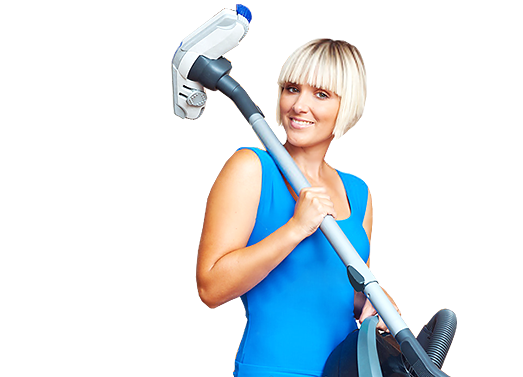The Path to Allergen Reduction: Keep Dust at Bay in Your Home
Posted on 10/09/2025
The Path to Allergen Reduction: Keep Dust at Bay in Your Home
In the modern world, more people are seeking solutions to create healthier home environments. If you or your family members suffer from allergies, you'll understand the discomfort and challenges dust and other allergens can have on your daily life. Allow us to guide you through an allergen reduction journey--unveiling key strategies to keep dust at bay in your home and ensure lasting comfort and well-being.

Why Focus on Dust and Allergen Control?
Often invisible to the naked eye, dust is a complex mixture comprising dead skin cells, pet dander, pollen, mold spores, fabric fibers, and sometimes even insect parts. When these elements accumulate, they can spark allergic reactions, worsen asthma, and compromise indoor air quality. Managing dust effectively is therefore essential for allergen reduction and for maintaining a refreshing, safe living environment.
- Improved Health: Decreasing indoor allergens boosts sleep quality, respiratory health, and overall comfort.
- Reduces Triggers: Dust mites and pet dander are two of the most common allergy triggers inside homes.
- Prevents Mold Growth: Keeping dust under control helps minimize the risk of mold spores settling and proliferating.
Understanding Indoor Dust: What's Actually Floating Around?
You may be surprised at what's truly in your household dust. Let's break down the most prevalent sources:
- Dead Skin Cells: Every day, humans and pets shed skin cells, which make up a large component of indoor dust.
- Pollen and Outdoor Allergens: These are tracked inside on shoes, clothing, and by open windows.
- Textile Fibers: Carpets, bedding, furniture, and drapes all shed microfibers.
- Pet Dander and Hair: If you share your home with furry friends, their dander and fur will inevitably contribute to indoor dust.
- Dust Mites: Microscopic pests which thrive in household dust, dust mites are a major allergen for many people.
Knowing where dust comes from provides a strong foundation for developing an effective allergen reduction plan.
The Dust-Allergy Connection: How Dust Triggers Allergies
Dust is an irritant to almost everyone, but for allergy sufferers, it's particularly troublesome. Allergic reactions are commonly triggered when your immune system overreacts to proteins in dust mite droppings, mold spores, pollen, or pet dander. Symptoms can manifest as:
- Sneezing and runny nose
- Watery, itchy eyes
- Coughing and postnasal drip
- Asthma flare-ups
- Fatigue and sleep disturbances
By targeting the underlying cause--dust build-up--you can significantly decrease these uncomfortable symptoms.
Allergen Reduction Strategies: Tackle Dust at Its Source
Taking a proactive stance is key. The following actionable tips will help you keep dust under control and minimize allergens throughout your home:
1. Up Your Cleaning Game -- Frequently and Correctly
- Use a High-Efficiency Vacuum: HEPA (High-Efficiency Particulate Air) filter vacuums trap fine particles and allergens far more effectively than regular models.
- Dust with Damp Cloths: Dry dusters can redistribute particles. Wipe surfaces with a slightly damp microfiber cloth to capture dust instead of spreading it around.
- Launder Textiles Regularly: Wash bedding, curtains, and pet beds weekly in hot water (at least 130?F / 54?C) to kill dust mites and remove allergens.
- Don't Forget Baseboards and Blinds: These commonly overlooked areas are dust magnets--add them to your regular cleaning routine.
2. Reduce Soft Furnishings and Clutter
- Choose Hard Floors: Carpets and rugs hold onto dust, so where possible, opt for hard flooring like wood, tile, or vinyl.
- Minimal Upholstery: Select leather or vinyl furniture that does not trap as much dust as fabric couches or chairs.
- Declutter: Less clutter means fewer surfaces for dust to settle on. Keep trinkets, books, and clothes organized and off the floor wherever possible.
3. Control Humidity for Dust Mite and Mold Prevention
- Maintain Indoor Humidity: Use a hygrometer to keep levels between 30-50%. Dust mites and mold thrive in higher humidity environments.
- Ventilate Properly: Use exhaust fans in kitchens and bathrooms, and open windows on dry days to promote air exchange.
- Use a Dehumidifier: In damp areas or during humid weather, a dehumidifier can make a major difference.
4. Utilize Allergen-Proof Bedding and Covers
- Cover Mattresses and Pillows: Select zippered, allergy-proof encasements to block dust mites' entry to bedding.
- Launder Bedding Frequently: Hot water washes (see above) are essential to kill mites and remove allergens.
5. Improve HVAC and Air Filtration Systems
- Upgrade Your Filters: Install HEPA filters in your central air and heating systems for maximum allergen removal.
- Change Filters Regularly: Check and replace furnace or AC filters every 1-3 months as per manufacturer's instructions.
- Consider Portable Air Purifiers: These can be especially helpful in bedrooms or high-traffic zones.
6. Pet Care and Grooming
- Bathtime Matters: Regularly bathe and groom pets to minimize dander and hair shed indoors.
- Keep Pets Out of Bedrooms: Creating pet-free zones--especially where you sleep--can lower your exposure to allergens.
- Clean Pet Beds and Toys: Frequently launder these items in hot water.
7. Advanced Tips for Allergen Reduction
- Seal Windows and Doors: Proper weather-stripping can prevent outdoor dust, pollen, and contaminants from entering the home.
- Remove Shoes at the Door: This simple habit stops dirt and pollen in their tracks, minimizing their spread throughout your home.
- Monitor Indoor Air Quality: Use smart detectors for dust, humidity, and air pollutants to stay ahead of allergen build-up.
Room-by-Room Dust and Allergen Busting Tips
Now let's take a focused approach. Here's how you can keep dust down in every room of your house for powerful allergen reduction.
Living Room
- Dust electronics and surfaces weekly with a damp microfiber cloth.
- Vacuum upholstered furniture or choose wipeable surfaces to minimize dust retention.
- Wash throws and cushion covers regularly in hot water.
Bedroom
- Encase mattresses and pillows with allergen-proof covers.
- Wash all bedding weekly with hot water.
- Choose blinds or washable curtains instead of heavy drapes.
- Store clothes in closed drawers and closets to prevent dust accumulation.
Kitchen
- Use an exhaust fan while cooking to remove airborne particles.
- Wipe counters, shelves, and cabinet tops regularly.
- Store dry goods in sealed containers to avoid attracting dust and pests.
Bathroom
- Clean mirrors, fixtures, and surfaces with a damp cloth.
- Run the ventilation fan during and after showers to control humidity.
- Wash bath mats and towels frequently.
Kids' Rooms
- Wash stuffed toys often (in hot water if possible).
- Keep toys organized in easily wiped bins instead of open shelves.
- Vacuum floors and under furniture regularly.
Products That Help Keep Dust at Bay
There are several products specifically designed to aid in household allergen reduction and dust management:
- HEPA Vacuums: Invest in a vacuum with certified HEPA filtration.
- Allergen-Proof Encasements: Encasing mattresses, pillows, and box springs keeps dust mites out.
- Microfiber Cloths: These are more effective at trapping dust than regular dusters.
- Dehumidifiers: Reduce moisture, making your home less hospitable to dust mites and mold.
- Portable Air Purifiers: Especially those with HEPA filters, they clean the air in individual rooms.
- Smart Home Air Quality Monitors: Alert you to poor air conditions or increases in dust and allergens.

The Importance of a Cleaning Schedule
To succeed in the journey to reduce allergens and dust in your home, consistency is everything. Develop a realistic cleaning schedule and get the whole family involved. Here's a sample timeline:
- Daily: Tidy up clutter, wipe down high-traffic surfaces, and remove pet hair.
- Weekly: Vacuum all floors, dust surfaces, and launder bedding and pet accessories.
- Monthly: Wash curtains, deep-clean carpets and furniture, and inspect HVAC filters.
- Seasonally: Perform a thorough dusting of baseboards, vents, fans, and closets.
Sticking to a schedule ensures that dust and allergens never have the chance to build up, making it easier to breathe freely and comfortably every day.
Final Thoughts: A Healthier, Dust-Free Home Is Possible
By taking concrete steps toward allergen reduction and choosing healthy cleaning habits, you'll transform your home into a sanctuary against dust and allergens. Remember: knowledge is power. Understanding where dust comes from and how it affects your health sets the stage for real improvement.
- Vacuum and dust with intention using the right tools
- Reduce clutter and choose easy-clean surfaces
- Control humidity to prevent dust mite and mold growth
- Embrace allergen-proof products for bedding and air quality
- Stay ahead with a regular, manageable cleaning routine
Reducing dust at home isn't just about cleanliness--it's about creating a safe, nurturing space for your entire family to thrive. With commitment and these proven strategies, you'll be well on your way down the path to a dust-free, healthy home.




